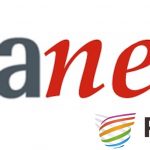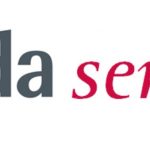
Gender Equality Plan: the European Commission publishes the Guide
- 30 Nov 2021
- Corporate governance Progetti finanziati
GEP compulsory for institutions and companies wishing to participate in the research funding program in Europe
Entities and companies wishing to participate in the research funding program in Europe will have to have a Gender Equality Plan (GEP): not a generic document but the formalization of a working procedure, adopted by top management and integrated into the organization of activities.
The adoption of the GEP is mandatory for public bodies by the 2022 calls and recommended for businesses, but it will be mandatory for all partners by the 2023 calls: a strong turning point, but also a demanding requirement!
In fact, for the Commission “GEP is a series of commitments and actions aimed at promoting gender equality in an organization, through institutional and cultural change”.
The European Commission published this week an explanatory guide to clarify the contents of the document, how to define and implement a GEP, with the aim of supporting companies to comply with the Commission’s requirements.
The GEP must necessarily include 4 ‘building blocks’:
- Be a public document signed by the top management of the organization and published on the site.
- Have dedicated resources and expertise for its implementation.
- Include a data collection system separated by gender and used for the purposes of the Plan.
- Include training and other awareness-raising actions on issues related to gender equality.
Furthermore, it is recommended to consider 5 thematic areas in order to ensure the drafting of a quality GEP.
GEP must therefore consider:
- Work-life balance and an inclusive corporate culture.
- Gender equality in the leadership and decision-making processes of the organization.
- Gender equality in the recruitment processes of new resources and career advancement.
- Inclusion of the gender issue within research and teaching programs.
- Measures against gender-based violence in the workplace.
The recommended procedure for the development and implementation of a GEP consists of 4 phases:
- Audit: collection of data separated by gender, identification of problems, overview of existing legislation and available resources;
- Planning: definition of the objectives and actions and policies (with relative timing) for their realization;
- Implementation: implementation of activities, which must include training, capacity-building actions, as well as campaigns to increase the visibility of the GEP inside and outside the organization;
- Evaluation: review of the results obtained, feedback collection, learning process necessary to correct / reformulate the GEP for the next cycle.
The Commission is keen to emphasize the importance of including the entire organization in the various stages of the GEP, in order to convey the importance of the issue to all its members and to ensure the success of the initiative. Naturally, each GEP must be developed in line with the specificities of each organization, such as its size, organizational structure, sector of activity.
Furthermore, the guide is full of examples, models and best practices to inspire or ask for advice in defining new GEP. Furthermore, numerous resources and sources on issues related to gender equality in the field of research and industry are cited. Finally, examples of resources are proposed to be dedicated to the real achievement of gender equality in an organization, such as a specific office, the allocation of part of the employees’ working time to participation in the plan, as well as gender budgeting actions.
An online tool was also created for the analysis of the scenario, the drafting of the plan, the implementation and monitoring of actions and results, in the university and research environment: GEAR is available on the EIGE – European website Institute for Gender Equality, which supported the Commission in drafting the GEP Guide and is very useful for those who approach the challenge of structuring a GEP for the first time, even in the company.
Several public or private organizations across Europe have already adopted and formalized strategies for gender equality in their working environment, although sometimes they are not exactly called Gender Equality Plans: the Commission will therefore also accept pre-existing (or duly reworked) plans as long as meet the criteria listed in the guide, and in particular include the 4 building blocks.
Europe is also accelerating on parity



